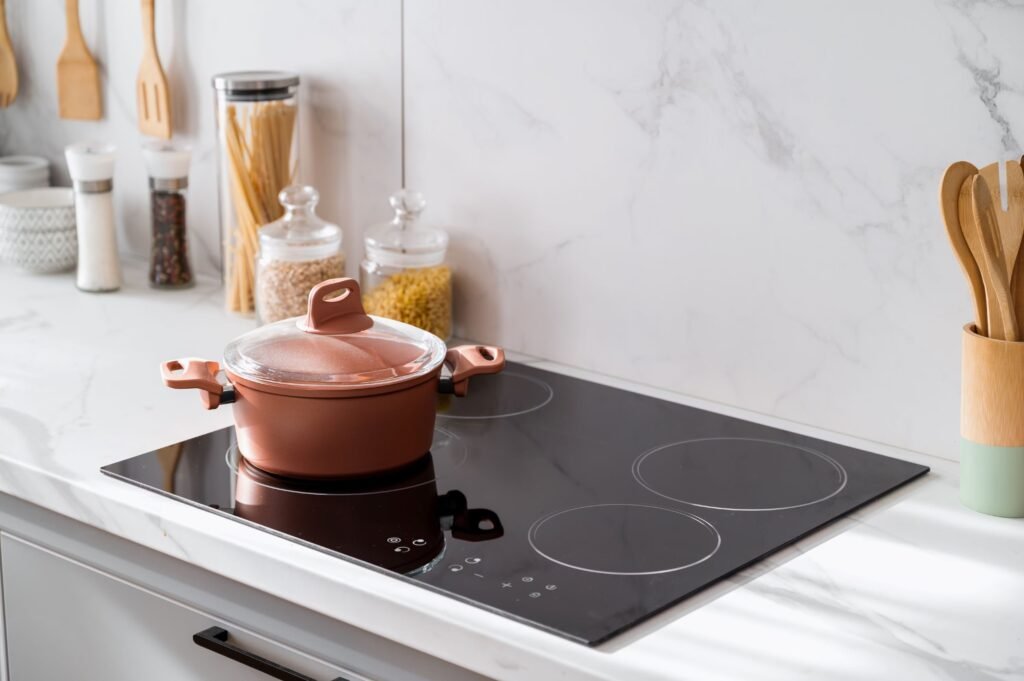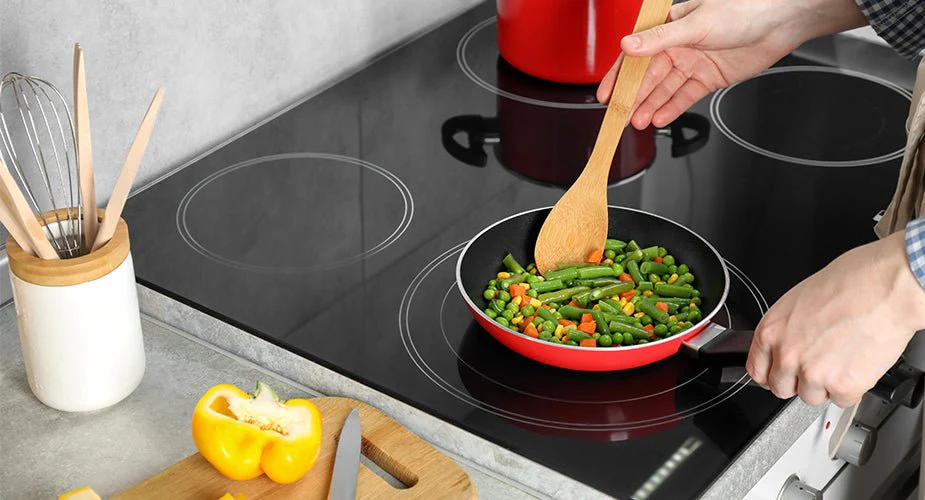Electric stove are kitchen appliances that use electric heat to cook food, as opposed to their traditional gas counterparts, which rely on combustible gas as a fuel source. The fundamental difference between the two lies in their heating methods; electric stoves utilize electrical coils or smooth top surfaces that heat up when electric current flows through them, whereas gas stoves produce flames by igniting gas. This reliance on electricity allows for different cooking techniques and control over heating, making them increasingly appealing to home chefs.
Historically, electric stoves emerged in the late 19th and early 20th centuries, marking a shift in culinary practices as households transitioned from wood and coal-burning stoves to more modern options. Over the decades, the design and technology surrounding electric stoves have evolved significantly. Advancements in materials and engineering have led to electric stoves that boast improved energy efficiency, rapid heat-up times, and consistent cooking temperatures. These improvements have fueled a resurgence in their popularity, allowing them to compete with traditional gas stoves that have long dominated the market.
Moreover, modern electric stoves often incorporate safety features such as automatic shut-off and temperature regulation, enhancing their appeal for families and individuals concerned about kitchen safety. The quiet operation and ease of cleaning associated with electric cooktops have further contributed to their favorable perception within contemporary cooking environments.

The growing emphasis on energy-efficient appliances has seen many households revisiting the benefits of electric stoves, prompted by both environmental concerns and rising utility costs. As utility providers often showcase incentives for using electric appliances, the future outlook for electric stoves positions them as a central player in the evolving landscape of home cooking, merging safety, technology, and consumer preferences in a single appliance.
Benefits of Using Electric Stoves
Electric stoves offer a myriad of advantages that make them an appealing choice for modern kitchens. One of the most significant benefits is their energy efficiency. Unlike traditional gas stoves, electric ranges convert almost all of the energy consumed into heat for cooking, leading to better performance and reduced energy costs over time. Furthermore, when electric stoves are powered by renewable energy sources such as solar or wind, their environmental impact is significantly diminished, making them an eco-friendlier option.
In addition to energy efficiency, electric stoves are known for their ease of cleaning and maintenance. The smooth surfaces of many electric cooktops facilitate simple wipe-downs, preventing food buildup and making post-cooking cleanup less time-consuming. This ease is especially beneficial in fast-paced cooking environments or for individuals with busy lifestyles. Moreover, without the need for ventilation systems, electric stoves eliminate the challenges of gas line installation and maintenance, reducing overall kitchen complexity.
Consistent cooking temperatures are another highlight of electric stoves. They provide more stable heat compared to gas stoves, allowing for precise control over cooking conditions. This precision is crucial for delicate tasks such as melting chocolate or simmering sauces, where temperature fluctuations can adversely impact results. Additionally, many modern electric models feature advanced technology, such as induction heating, which not only speeds up cooking times but also enhances overall energy efficiency.
Safety is a prominent consideration when selecting a cooking appliance, and electric stoves excel in this aspect. Many modern electric ranges include automatic shut-off features that activate if the stove is left on unintentionally, thus reducing the risk of kitchen fires. Overall, the myriad benefits of electric stoves—ranging from energy efficiency and ease of cleaning to safety features—make them an increasingly popular culinary choice for contemporary households.
Types of Electric Stoves Available
Electric stoves have evolved significantly, offering a variety of types that cater to diverse culinary preferences and kitchen requirements. The primary categories include standard coil stoves, smooth-top stoves, induction stoves, and wall ovens.
Standard coil stoves are the traditional electric stoves featuring heating elements mounted on the surface. These coils become red-hot when activated, providing reliable cooking performance. The advantages of coil stoves include their affordability and ease of maintenance. However, one potential drawback is their less modern appearance, which can detract from the aesthetic of contemporary kitchens.
Smooth-top stoves, also known as glass-top ranges, feature a flat surface made from smooth ceramic or glass. These stoves utilize radiant heat or induction technology under the smooth surface. Their sleek design enhances kitchen aesthetics while also making them easier to clean compared to coil stoves, as spills do not get caught in crevices. Nonetheless, users must handle them with care to prevent scratches and damage, as they may require specific types of cookware for optimal performance.

Induction stoves represent a newer technology that uses electromagnetic energy to heat pots and pans directly, rather than heating the surface itself. This method allows for rapid and precise temperature control, making it a favorite among professional chefs. The efficiency of induction stoves also leads to faster cooking times and reduced energy consumption. However, the requirement for compatible cookware—ferrous metals—may be a consideration for some consumers.
Finally, wall ovens, an increasingly popular choice, offer flexibility in kitchen design. They are built into the wall, allowing for easier access and better ergonomic cooking. Wall ovens can be electric or incorporate additional features like convection cooking. While they can enhance the kitchen’s visual appeal, installation may require more space and a higher investment cost compared to traditional ranges. Overall, understanding these electric stove types will guide consumers in making informed choices suited to their culinary needs.
Tips for Choosing and Maintaining Your Electric Stove
Choosing the right electric stove involves a thoughtful consideration of various factors, ensuring that the unit best meets your cooking needs and fits comfortably in your kitchen. Begin by assessing the size and layout of your kitchen space. Measure the area designated for the electric stove to ensure a perfect fit. Consider the stove’s dimensions, which typically range from 30 to 36 inches in width for standard models. It’s essential to leave enough clearance around the stove for ventilation and accessibility.
Next, think about your cooking style and requirements. Electric stoves come in various configurations, including coil, smooth top, and induction. Coil and smooth top stoves offer more straightforward cooking experiences, while induction models utilize magnetic technology that heats pots and pans directly for faster cooking. Evaluate your culinary habits—if you frequently prepare meals requiring precise temperature control, an induction electric stove may be the perfect choice.
Additionally, consider your budget before making a purchase. Electric stoves come with varying price tags based on brand, features, and technology. Look for models that offer a good balance of functionality and affordability, and don’t forget to take energy efficiency into account, as this can influence long-term operational costs.
Once you have selected your electric stove, maintaining it is crucial for longevity and performance. Regular cleaning is essential; use gentle cleaners and avoid abrasive sponges to prevent damage to the surface. If your electric stove has automatic features, ensure you familiarize yourself with the instructional manual to troubleshoot common issues effectively. Also, check for wear and tear on coil burners, as replacing them promptly can ensure optimal performance. Understanding basic maintenance practices will help you enjoy the full capabilities of your electric stove for years to come.

